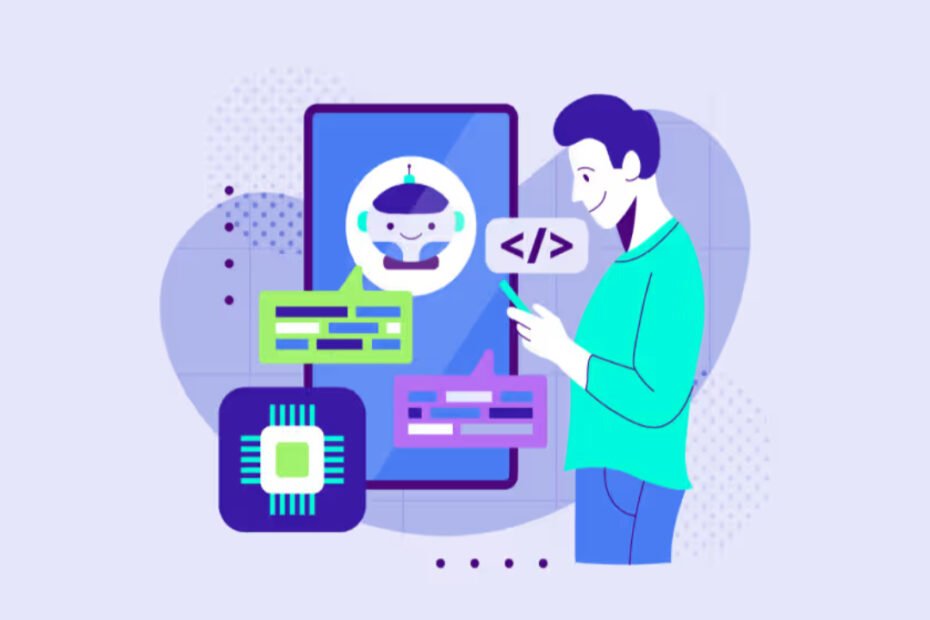Creating websites or applications used to require specialized teams, programming expertise, and long development periods. But with the advent of generative artificial intelligence, this scenario has begun to change.
Lovable AI is an example of an AI tool for creating applications. The Swedish startup has developed a solution capable of transforming simple text descriptions into complete web applications, all based on conversational interaction with AI.
The Lovable platform has attracted the interest of programmers, entrepreneurs, and technology enthusiasts, and is seen as one of the most disruptive tools in the world of digital development.
With that in mind, in this article we will show you what Lovable AI is and how this tool can help in the creation of applications. Check it out!
What is Lovable AI?
Created in 2023, Lovable IA emerged with the mission of simplifying software development. Its goal is to democratize the creation of digital applications even for those who do not know how to program, allowing ideas to be transformed into ready-made products without having to write code manually.
The platform is based on OpenAI’s GPT Engineer, capable of generating both the interface and the back-end and logic of the system from natural language instructions. Unlike traditional no-code solutions, Lovable IA delivers real, production-ready code, allowing for real-time adjustments with the support of artificial intelligence.
Instead of assembling visual blocks by dragging and dropping elements, users simply describe their app idea in plain text, and the AI automatically builds a complete code base. The result can be executed, customized, and published in minutes.
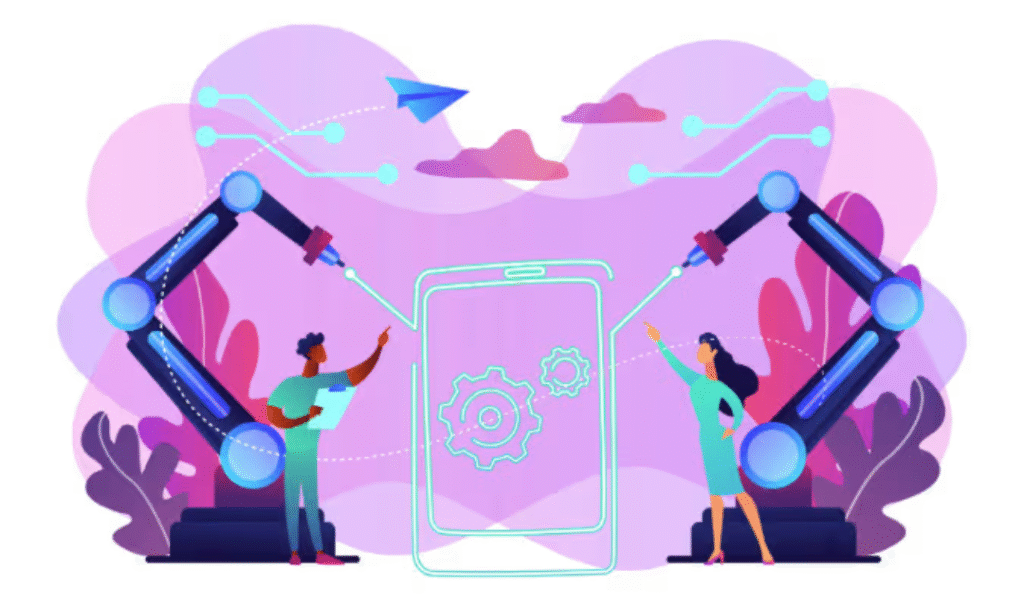
How does Lovable AI work?
Basically, Lovable AI allows you to create applications from text prompts. This integration between AI and natural language automates the creation of applications with complete, production-ready code.
The generated code follows current market standards, such as React and Tailwind CSS. This way, you can export the project, open it in your favorite editor, and continue development without restrictions.
In addition, Lovable facilitates integrations with tools widely used by developers, such as GitHub and Supabase (for databases and APIs), delivering an experience close to the professional workflow.
When you access Lovable AI, you will find an area to type what you want to create. As soon as you submit the description, the AI starts building the prototype.
If you prefer to customize it further, you can make adjustments directly through the chat or choose ready-made templates that speed up creation. Later in the article, we will detail how to use Lovable AI in practice.

Key Features of Lovable AI
Lovable allows you to transform text descriptions directly into complete applications, generating both the frontend and backend without requiring manual programming. This streamlines the creation of prototypes and MVPs, as well as enabling quick changes during development.
A very useful feature is the integration with Figma, which converts designed interfaces into functional applications, ensuring that the look created by designers is preserved in the final product. This integration facilitates communication between design and technology.
The platform also offers Chat Mode Agent, an intelligent assistant that helps with planning, debugging, and suggesting improvements before implementation, making the process safer and more efficient.
In terms of infrastructure, Lovable supports Supabase, offering databases, authentication, storage, and compatibility with external APIs, which expands the possibilities for robust and scalable projects.
Another positive point is real-time collaboration, with multiplayer mode, version logging, and permission control, avoiding rework and ensuring that the entire team is aligned.
Finally, the option to export the code and integrate it with GitHub ensures total autonomy for technical teams, who can continue to evolve their projects outside the platform.
How to use Lovable AI?
Like other AI-based application developers, Lovable AI uses advanced models such as Anthropic’s Claude to transform instructions into code, functioning similarly to text generation tools such as Claude Chat or ChatGPT.
1. Account creation
Go to Lovable, register for free, and log in to your personal area. Right away, you will see a text field to describe the idea you want to develop.

2. Describe your idea
Just type in the idea for the application you want to create, in natural language. For example: “I want a blog application in Next.js.” The platform interprets your description and automatically generates the structural basis for the project.
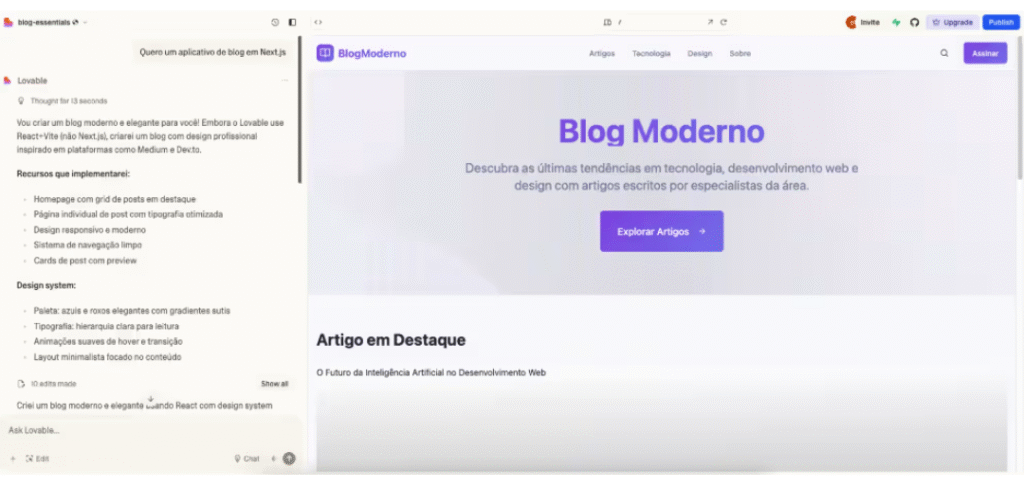
3. Adjust and customize your project
Once the prototype is available, you will have a preview link to follow the app running in real time. From there, you can adapt the interface, add or remove features, and refine design or logic details until they fit your needs.
Lovable facilitates the process with features such as version history and undo actions, as well as the ability to sync with GitHub or edit directly in your preferred IDE, ensuring flexibility for developers.
4. Project publication
Once you are satisfied with the result, you can publish your app in just a few clicks. Integration with services such as Netlify allows for quick deployments, and the system automatically generates a shareable URL, ready to be used or presented.
Main uses of Lovable AI
Lovable AI allows you to create digital solutions for different contexts, such as:
- Landing pages for launches, courses, and events;
- Institutional or personal websites;
- Complete web applications;
- Internal systems for teams;
- Custom dashboards and frameworks;
- Even simple games for validating ideas;
- Various ready-made templates.
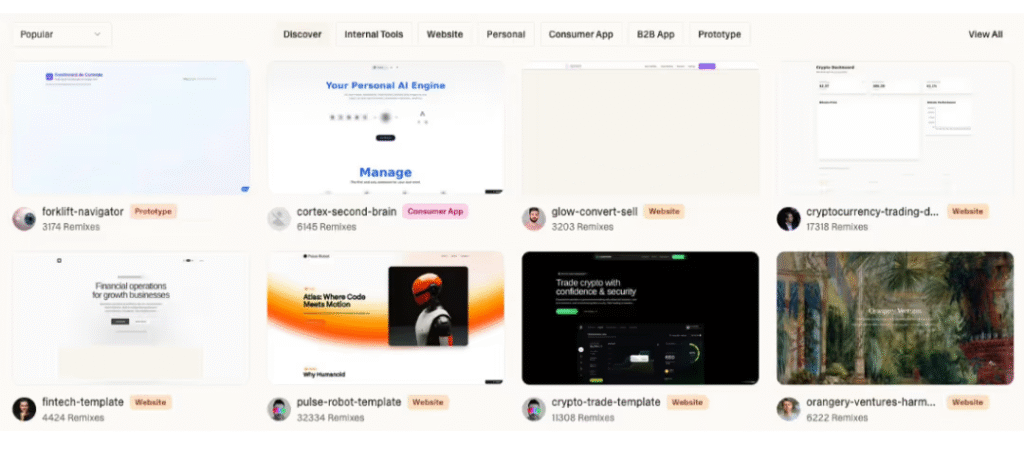
In addition, users can export the generated source code and adjust it with technologies, maintaining complete freedom of customization.
Another unique feature is the native integrations with services such as Supabase and Google Cloud, which make the tool suitable for both rapid MVP creation and the development of production-ready projects.
Lovable AI Plans
Lovable AI adopts the freemium model, allowing any user to start at no cost and only invest in paid plans if demand for use increases. The free version is already quite useful, but those looking for more features can opt for advanced plans, which include advantages such as:
- execution of projects in private mode;
- extra monthly credits for development;
- the possibility of creating custom domains;
- removal of the Lovable brand from final applications, ideal for those who want to maintain their own identity.
Among the available plans, Pro and Business offer up to 10,000 credits per month, project privacy, custom domains, support, etc. The Enterprise package is fully adjustable to each customer’s needs.
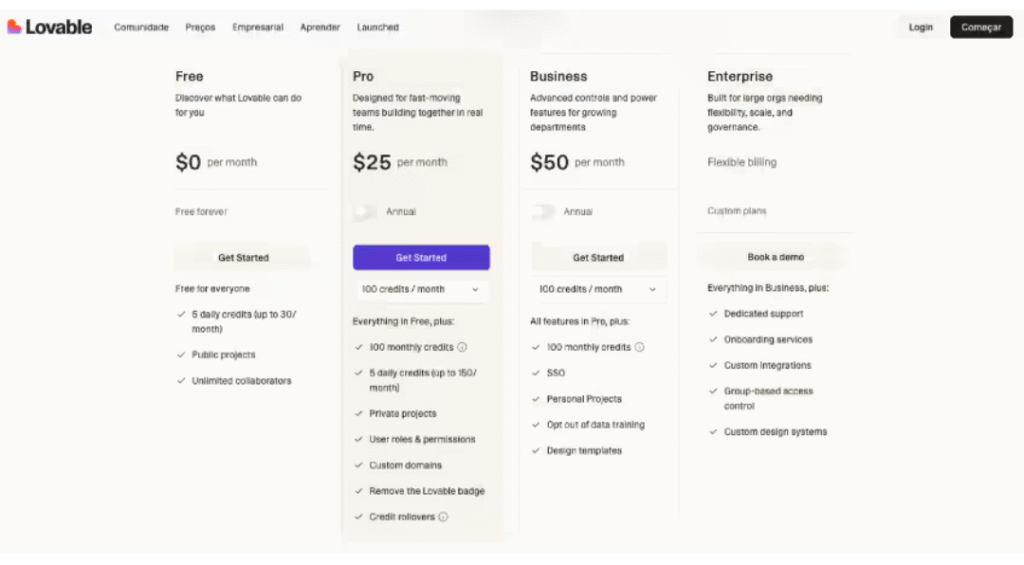
Like other AI platforms, the system works with tokens, which represent the “fuel” for interactions. Each time you create, edit, or request adjustments to a project, you consume a number of tokens proportional to the complexity of the task.
Simple requests use fewer tokens, while building a complete app requires more. Therefore, tracking consumption helps optimize costs and make better use of the tool.
In addition, Lovable.dev sets daily and monthly message limits, as running large language models involves high costs. This control varies according to the plan contracted.
For those who are just testing the platform, the free plan offers:
- up to 5 messages per day;
- a maximum of 30 messages per month.
An important detail: messages do not accumulate. This means that if you do not use your daily quota, it will not be transferred to the next day.
Advantages and disadvantages of Lovable AI
Lovable AI is popular thanks to its practicality, where anyone can develop applications just by describing what they want in text. This approach reduces the time needed to create MVPs and prototypes, making the process much more agile.
In addition, compatibility with solutions such as Figma and Supabase expands its potential for use, connecting design, database, and advanced features in a single flow.
Another unique feature is team collaboration, which allows users to work together and keep a history of changes organized. There is also the option to export the code, offering autonomy for those who want to continue development outside the platform and ensuring more freedom to scale projects.
Easy access is another important highlight. The interface replaces the need to master programming languages with natural language commands, making the tool more inclusive and accessible even for those who have never programmed before.
This feature transforms Lovable IA into a solution that reduces technical barriers and encourages innovation in different areas.
However, like all no-code technology, the platform may have limitations in highly complex projects. In scenarios that require deep customization or very high performance, it may be necessary to resort to manual adjustments outside the environment.
Who is Lovable AI recommended for?
Lovable acts as a development accelerator, making the software creation process more democratic and accessible, especially for the vast majority who do not yet have programming experience.
- People without programming experience who want to get ideas off the ground quickly;
- Entrepreneurs looking to validate concepts at low cost and without relying on a robust team;
- Designers and PMs who need to create interactive prototypes to test solutions and functionalities;
- Small teams that want to deliver quick results without time-consuming processes;
- Developers who want to accelerate the initial phase of projects or assemble MVPs in a short time;
- Technology and data professionals who need to integrate tools or automate flows without dealing with complex code.
Have you learned what Lovable AI is?
We hope our article has helped you understand what Lovable AI is, its features and advantages, and how to use it to develop projects without complications.

